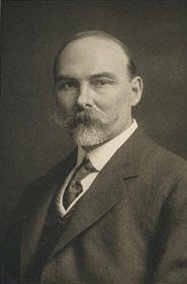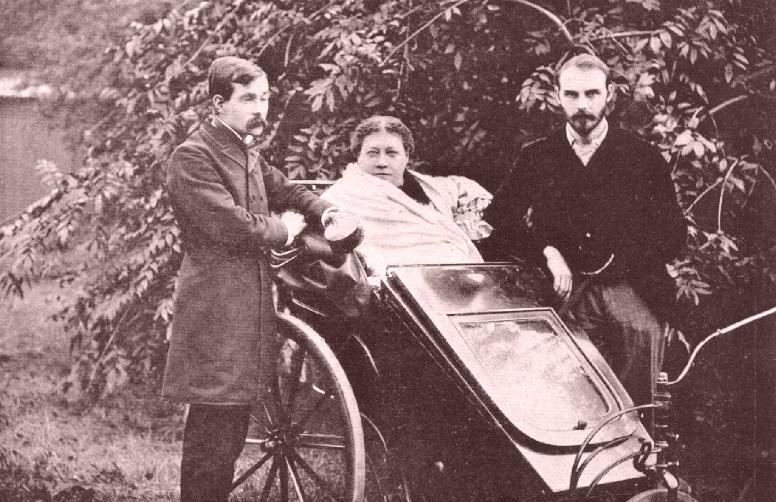<Back to Index>
- Writer George Robert Stowe Mead, 1863
PAGE SPONSOR


George Robert Stowe Mead (Nuneaton, 22 March 1863 – 28 September 1933) was an English author, editor, translator, and an influential member of the Theosophical Society as well as the founder of the Quest Society.
George Robert Stowe Mead was born at Nuneaton, Warwickshire, England, on the 22nd of March 1863. He was born to Colonel Robert Mead, an Officer in the British Army, and to Mary Mead, who had received a traditional education at Rochester Cathedral School.
Having shown academic potential George Mead began studying mathematics at St John's College, Cambridge. Eventually shifting his education towards the study of Classics he gained much knowledge of both Greek and Latin. In 1884 he completed a bachelor of arts degree, in the same year he also began to practice the position of public school master.
While still at Cambridge University Mead read Esoteric Buddhism by Alfred Percy Sinnett. This comprehensive theosophical account of the eastern religion prompted Mead to contact two theosophists in London named Bertam Keightly and Mohini Chatterji, which eventually led him to join the Theosophical Society.
Mead became a member of Helena Petrovna Blavatsky's Theosophical Society in 1884. He abandoned his teaching profession in 1889 to be Blavatsky's private secretary and also became a joint secretary of the Esoteric Section (E.S.) of the Theosophical Society. The E.S. was for those whom the Theosophical Society deemed more advanced.
G.R.S Mead received Blavatsky's six Esoteric Instructions and other teachings at twenty - two meetings headed by Blavatsky which were only attended by the Inner Group of the Theosophical Society. It was because of the intimacy Mead felt with the Inner Group that he married Laura Cooper in 1899.
Contributing intellectually to the Theosophical Society, at first most interested in eastern religions, he quickly became more and more attracted to western esotericism of religion and philosophy, particularly Neoplatonism, Gnosticism and Hermeticism, though his scholarship and publications continued to engage with eastern religion. Making many contributions to the Theosophical Society's Lucifer as joint editor, he eventually became the sole editor of The Theosophical Review in 1907 (as Lucifer was renamed in 1897).
As of February 1909, Mead and some seven - hundred members of the Theosophical Society's British Section resigned in protest of Annie Besant's reinstating of Charles Webster Leadbeater to membership in the society. Leadbeater had been a prominent member of the Theosophical Society until he was accused in 1906 of teaching masturbation to the sons of some American Theosophists under the guise of occult training. While this prompted Mead's resignation, his frustration at the dogmatism of the Theosophical Society may also have been a major contributor to his break with the society. He had been a member for twenty - five years.
In March 1909 Mead founded the Quest Society, composed of 150 defectors of the Theosophical Society and 100 other new members. Very intentionally this new society was planned to be an undogmatic approach to the comparative study and investigation of religion, philosophy and science. The Quest Society had lectures at Kensington Town Hall in central London but its most focused effort was in its publishing of The Quest: A Quarterly Review which ran from 1909 - 1931 with many contributors.
Among notable names influenced by G.R.S. Mead there can be found: Ezra Pound, W.B. Yeats, Hermann Hesse, Kenneth Rexroth and Robert Duncan. In her celebrated biography of Jung, Deirdre Bair states that Carl Gustav Jung was also influenced by George Mead, himself owning at least eighteen of Mead's books, but Sonu Shamdasani, in 2005, stated otherwise.